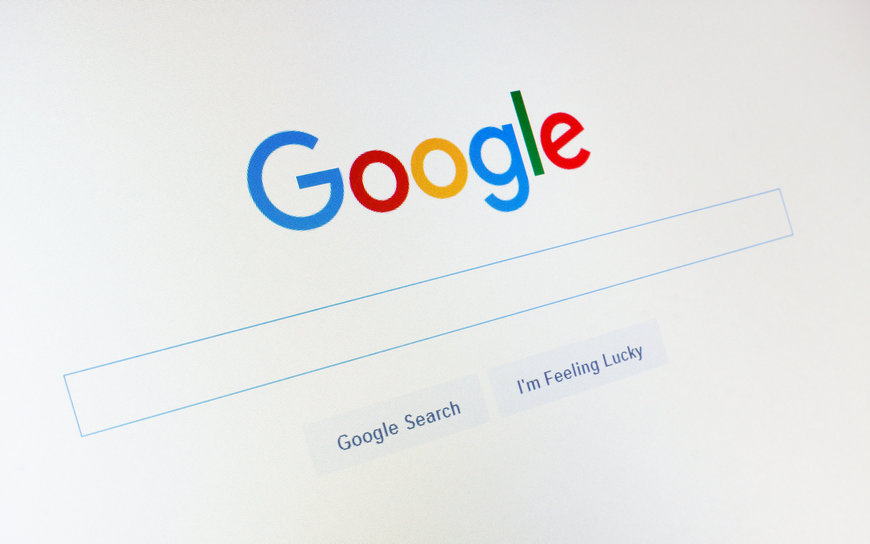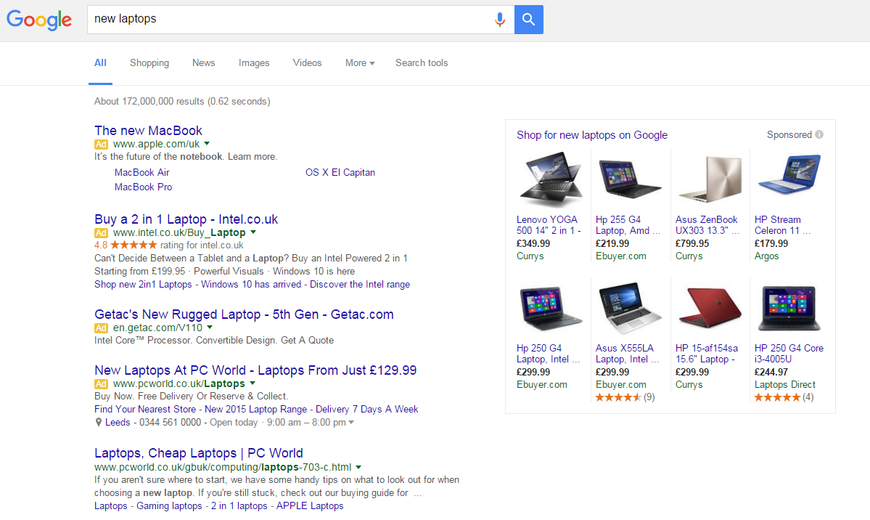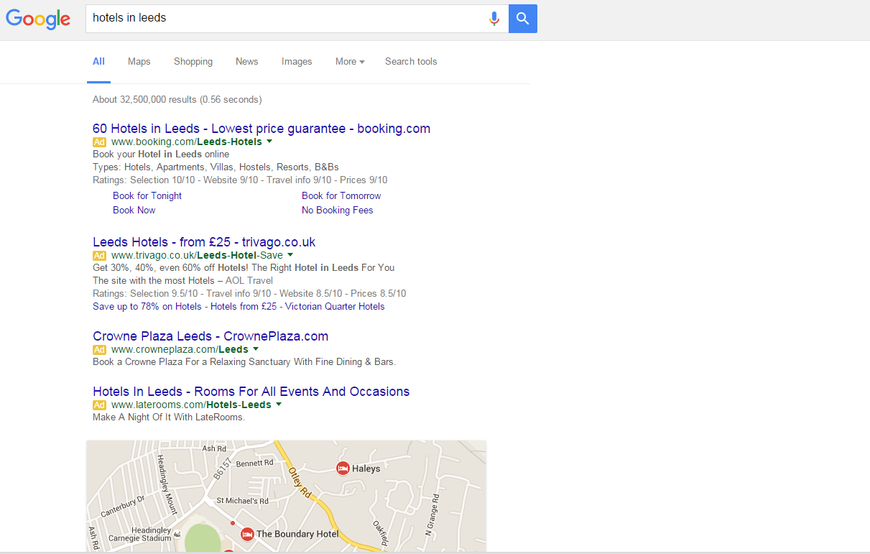In its most recent shake-up, Google is no longer showing ads on the right hand side of its results pages. In place of these ads, Google will now start showing an additional ad at the top of the search results, though it claims this will only occur for ‘highly commercial queries’.
Although the change has not yet been formally announced, a Google spokesperson has confirmed that the change will be rolled out globally. It is thought that Google began implementing the change last Friday, but this is actually something that’s been in testing since 2010. The rollout was finalised last night, with right hand side ads now phased out completely on desktop and tablet devices.
There are however two exceptions; product listing ads and the knowledge panel. This signals an increased focus on Shopping Ads from Google…
The change comes in line with Google’s efforts to synergise desktop and mobile search results. For ads to be visible above-the-fold, advertisers will need to make sure that they’re above third or fourth position.
What does this mean for advertisers?
First and foremost, higher CPCs. The competition for the top positions will become much more aggressive, with advertisers increasing bids in order to avoid dropping to the bottom of the page. As a result of this, any ads that are below the third or fourth position are likely to see their clickthrough rate decline from now on.
Not only will this affect PPC, but organic results will also be pushed further down the page; so a bigger focus will be placed on improving organic rankings. As you can see in the screenshot below, a search for ‘hotels in leeds’ generates 4 ads at the top; therefore pushing organic results below the fold.
Google has identified that ads on the right hand side tend to see lower average clickthrough rates, and therefore by increasing the focus on the ads at the top of the results page, Google’s profitability can be increased through more clicks at a higher CPC.
Although this may increase the costs for advertisers, it may be a blessing in disguise. This move will see advertisers work harder to increase quality score through better ad relevancy and landing page experience, which in turn will improve the user experience. With the value of paid search clicks expected to rise, conversion rate optimisation will become more important in advertisers’ efforts to turn clicks into conversions.
by Jen Mottram









